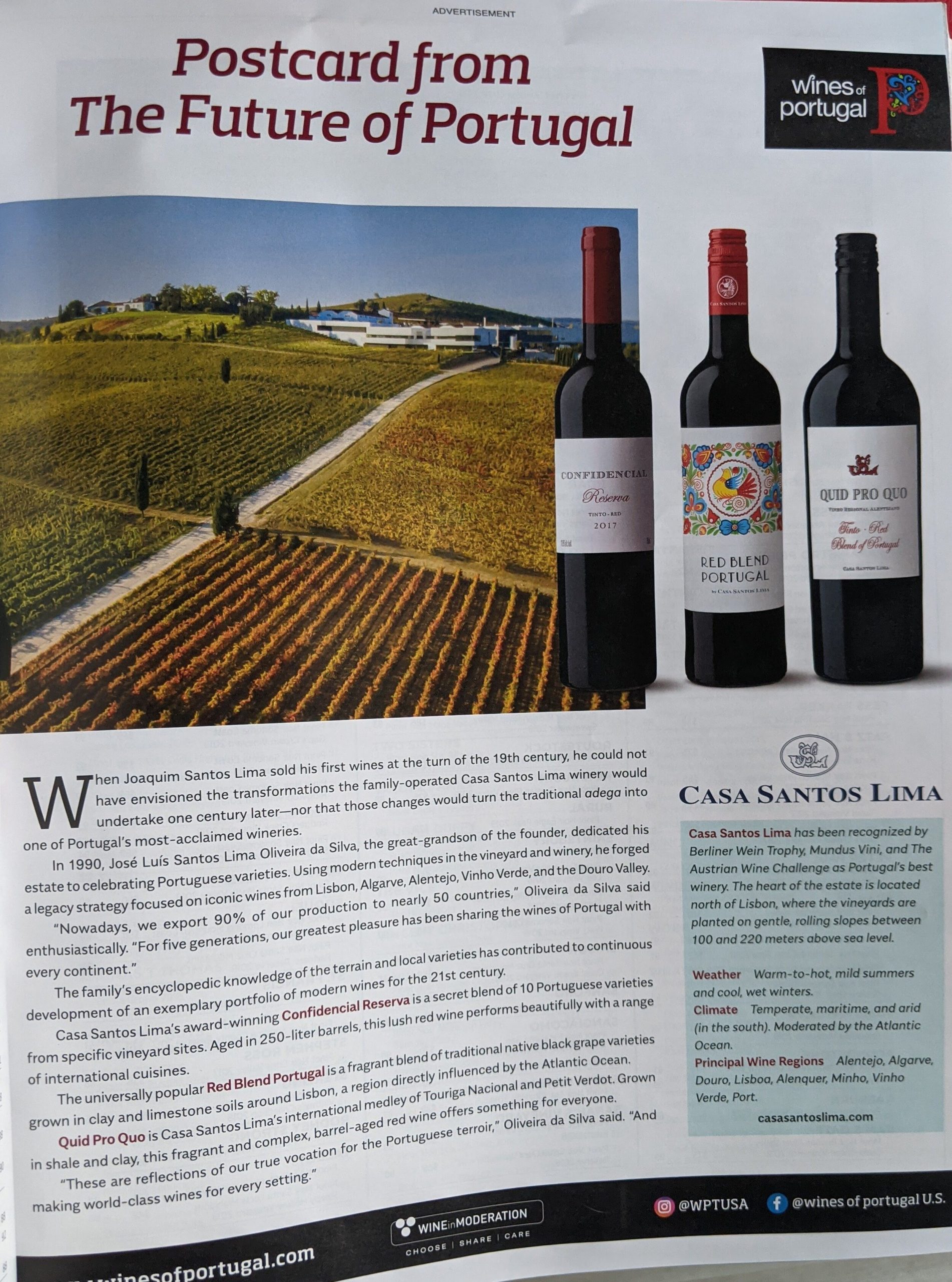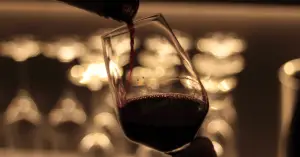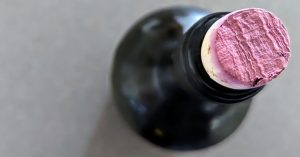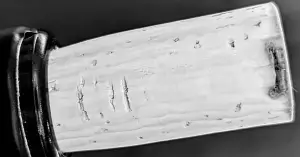
Well-executed and clever advertising takes effort. We’re surrounded by advertising every day, whether on our daily commute or on a preferred social media platform. While advertising for wine is similar to shampoo, fast food restaurants, or any other product or service being sold, it does have a few unique challenges.
Countries may regulate alcohol advertising; France is the textbook example with the Loi Evin, which restricts advertising activities. Wine producers have a toolbox of options when it comes to advertising, including sponsorship, giveaways, print media, and product placement. Investing in advertising campaigns requires resources – time and money – so approaches vary depending on a wine producer’s size.
How Do Regional Laws Affect Wine Advertisements?
As a controlled substance, advertising for alcohol may be regulated depending on regional laws. Overwhelmingly, wine advertisements focus on personal, social, or sexual success using seductive messaging.
France is the classic example of laws evolving to regulate alcohol advertisements with the ‘Loi Evin‘ or Evin Law. Passed in 1991, the Loi Evin prohibits a range of marketing activities on alcohol. Alcohol adverts cannot be shown on television or in cinemas, and alcohol producers cannot sponsor cultural or sporting events.
Further, there’s this explicit restriction:
Messages and images should refer only to the qualities of the products such as degree, origin, composition, means of production, patterns of consumption.
As a result, the seductive and provocative messages around advertising were prohibited. Here’s an alcohol advertisement image from before the 1981 French Evin Law:

These three wine advertisements were determined to be illegal. Notice the seductive imagery behind the glasses.

France has one of the strictest controls on alcohol advertising in the EU. Today, producers use product-focused ad campaigns showcasing qualities or specific attributes for the wine.
Here’s a current advert for the French wine producer Chateau du Cartillon. Notice the absence of lifestyle marketing.

How Can Wineries Advertise Their Wines?
Radio
How many people still listen to the radio? I’ve not come across a radio advertisement for wine. Beer? Sure. Especially around the summer holidays. Wine? Not so much. Radio commercials are less expensive than tv and movies, but the drawback is a lack of imagery associated with a product that largely seeks to sell a lifestyle.
Wine Apps
Whether using an app to track what wines are in your cellar (e.g., Cellartracker), or get wine tasting reviews (e.g., Vivino), wine apps can help wine-loving consumers sift through the world of wine. Stores advertise on these apps and link the consumer to their websites to purchase wine. The store pays a commission to the app for any sales.
This is a clever way to measure the return on investment (ROI) for any advertising campaign, as the store will be able to see metrics on referrals.
TV and Cinema
Commercials and product placement on television and in the movies can reach the largest number of people, but are also the most expensive; therefore, this advertisement venue is typically reserved for large conglomerates and major producers.
Here are some fun examples, but check out more wine product placements on the fabulously searchable Product Placement Blog.



Press Advertising
These full-page, striking images of wine or wine-related pictures found in specialized food and drink publications or lifestyle sections of newspapers target wine-curious or wine-knowledgeable consumers. Sometimes consortiums or high-end producers pay for advertorials written by wine writers to highlight a specific region or wines.
This is a nice advertorial from the Wines of Portugal (of which I’m an unabashed fangirl).

Social Media
Popular opinion: Wine is a social beverage to be shared over good food and good conversation. Logical leap: Social media should be a natural advertising platform to pair with the wine industry.
Social media marketing is its own field of study, and wine marketing for social media is a thing.
If a wine brand knows the social media platform preferences of its consumer base, then it can target that platform to reach its market segment. As a relatively inexpensive platform for advertisement and consumer engagement, wine brands are coming into their own on social media.
Apart from the low cost of entry, another upside of social media is that positive peer-reviews and word-of-mouth are often more powerful than a brand’s posts. The opposite is also true: negative reviews on social media can hurt a brand.
Social media for wine marketing is still in its infancy. Brands are learning how to leverage their online presence effectively to influence consumer behavior. Regular updates of news, articles, pictures, and videos – all balanced by strategic calls-to-action – can drive potential consumer engagement on social media platforms.
Example A. Search #wine on Instagram and you’ll find that images generally fall into 6 categories: wine bottles, sexy women, vineyards, production activities, wine glasses, and friends enjoying wine.
Brands need to find the right mix of images to boost engagement.
Looking for a wine brand that’s doing social media engagement well on Instagram?
Example B. Check out @tablascreek. They post a healthy range of lifestyle, personal interest, social activities, vineyard updates, and, of course, wine images.

Sponsorship
US sports and cultural events often seek sponsorship from alcohol brands. This includes strategic placement of their brand logo and exclusive rights to serve their products at the event.
My most recent experience? Francis Coppola’s monopoly at the Oakland Coliseum.

Advertising alcohol at sporting venues is not without controversy. There’s an obvious dichotomy between an athletic event intended to promote health and well-being and alcohol consumption, a known carcinogen.
Brand Websites
Brand, company, and producer websites give customers and potential customers an opportunity to interact with a product virtually and to purchase the product if the site has an online storefront.
Well-designed websites require an initial investment for design and continuing resources for upkeep. The two most critical pieces to a website are ease of navigation and overall attractiveness.
Functional websites will carry the brand image across all of its webpages and beyond, including the brand’s social media platforms. As with any website, search page rankings can drive traffic, and wine brands may invest in search engine optimization strategies.
What do wine websites want to communicate?
Wine brand websites tend to focus on a story – whether it’s the land, family, winemaker, or wine itself – curating a narrative that makes its wine unique from all others.
One drawback with websites is that they may attract underage visitors, potentially violating regional laws. This is why many wine-related websites will ask for confirmation of the visitor’s legal drinking age.
Can kids lie? Sure. (Aside: I’ve yet to meet the minor who’s sufficiently obsessed with wine to seek out a wine website.)
Wine Tourism
Just like it sounds, wine tourism experiences cater to the casual, curious drinker who happens to be in town for a different purpose, all the way to highly-tailored, educational experiences targeting serious wine enthusiasts who want to talk with the winemaker and feel the vineyard’s soil beneath their feet.
More generally, regional wine producers often create wine trails, linking local producers together and promoting their tasting rooms or cellar door operations for day trips.
One drawback to wine tourism is developing the branding and infrastructure to support the increase in foot traffic. For example, many local communities invest in public transportation to keep intoxicated drivers off the roads.
Why is wine tourism a good investment for a producer? Engaged consumers who can try before they buy are more likely to purchase wines and may even become loyal customers later on.
Events and Festivals
Who doesn’t love the idea of a wine festival? Regions and consortiums increasingly offer festivals to spotlight different producers. These events attract potential customers and raise brand awareness.
Attending these events (as a producer) isn’t cheap, and producers are expected to cover the costs of any wine served on top of paying an exhibit fee.
Standing out from the crowd can be challenging if the festival has numerous exhibitors, and the brand needs to carefully consider how it will separate itself from the crowd. This could include small bites, complimentary tasting cards for a later date, barrel tastings, merchandise raffles, etc.
Non-wine events, for example, food or music festivals, give producers access to a broader potential customer base, but the audience may be less inclined to convert into buyers. In this case, the producer may charge for tastings.
My favorite non-wine event example: Our local County Fair always has a few producers offering tasting flights for a fee. Sheep and Chardonnay anyone?
Public Relations Interface
Larger brands may invest in public relations (PR) activities. This doesn’t include direct marketing but focuses on the brand’s image overall.
Brand ambassadors fall under the PR umbrella and take on press releases, public appearances, newsletters, and social media activities. Some brands even hire social media influencers (key opinion leaders) for product placement and promotion on social media platforms.
Billboards
Stuck in traffic much? Wine billboards target commuters. Ideally, brands research the consumption habits of the local population and then pay for strategic placement of their wines in local stores.
Here’s a Stella Rosa billboard from the Midwest, USA. Stella Rosa wines are semi-sweet, targeting low-involvement, casual wine drinkers.
The company also advertises to the Latinx community through strategic billboards placed extensively in Southern California, but they don’t bother spending their advertising dollars in wine country where the local population tends to be more wine-savvy, preferring mid-range (+) wines of good and very-good quality.
Award Winning Wine
Lower-involvement and less-knowledgeable wine drinkers who enjoy wine as a sideline to their lives, not the centerpiece, need help sifting through the quantities of bottles on store shelves.
One simple way for brands to stand out is to put a medal on it. A seal offers a visual cue that ‘Ah! This is a quality wine!’
The Barefoot wine brand, an inexpensive, mass-produced wine targeting the entry-level drinker, executes this strategy at a virtuoso level. Every Barefoot bottle and box wine has a seal of some sort indicating an award-winning wine.
The downside? Producers must pay to enter their wines into competitions, but the recognition and ability to market the award could pay significant dividends if the brand’s market segment values awards.
Final Thoughts – Wine Advertising Is Subtle and Complicated
The next time you run across an advertisement for wine, think about the ad’s placement and what it’s selling.
Try to fathom the sheer amount of creative thought behind that bottle, label, advertisement or product placement. It’s impressive!
Thirsty for More?
Here’s an exhaustive post that explains how wine bottles get priced.
And here’s a helpful post that goes into how they decide what grapes to plant where.






